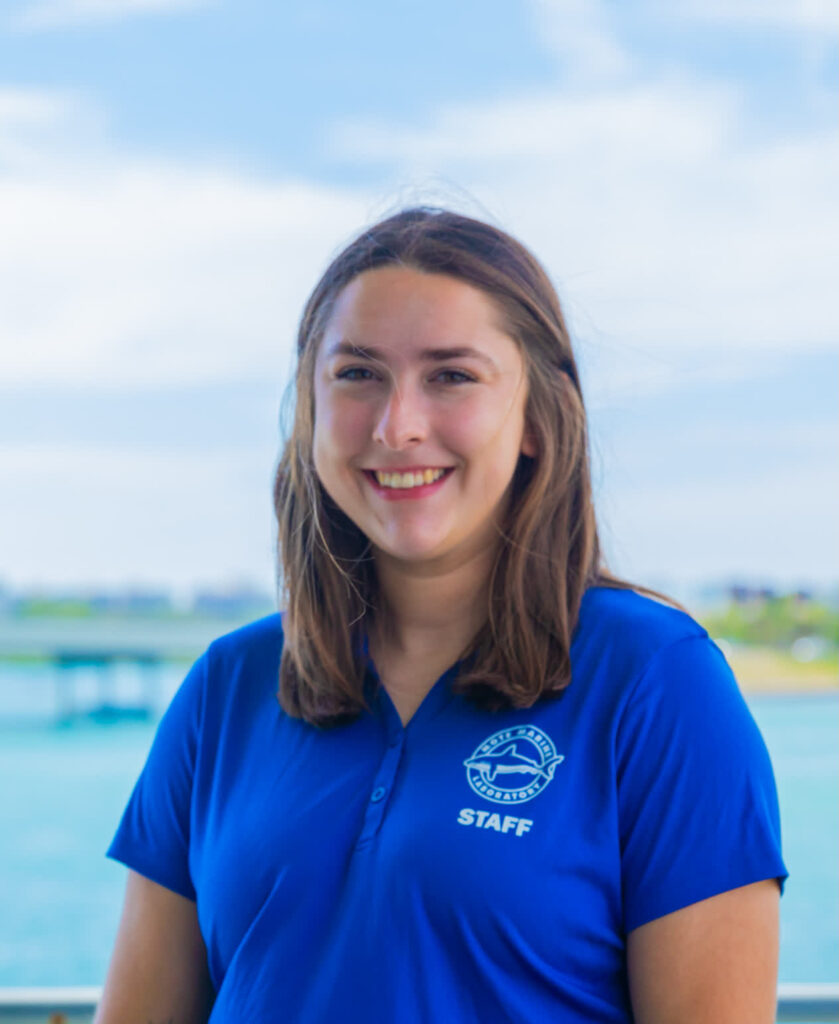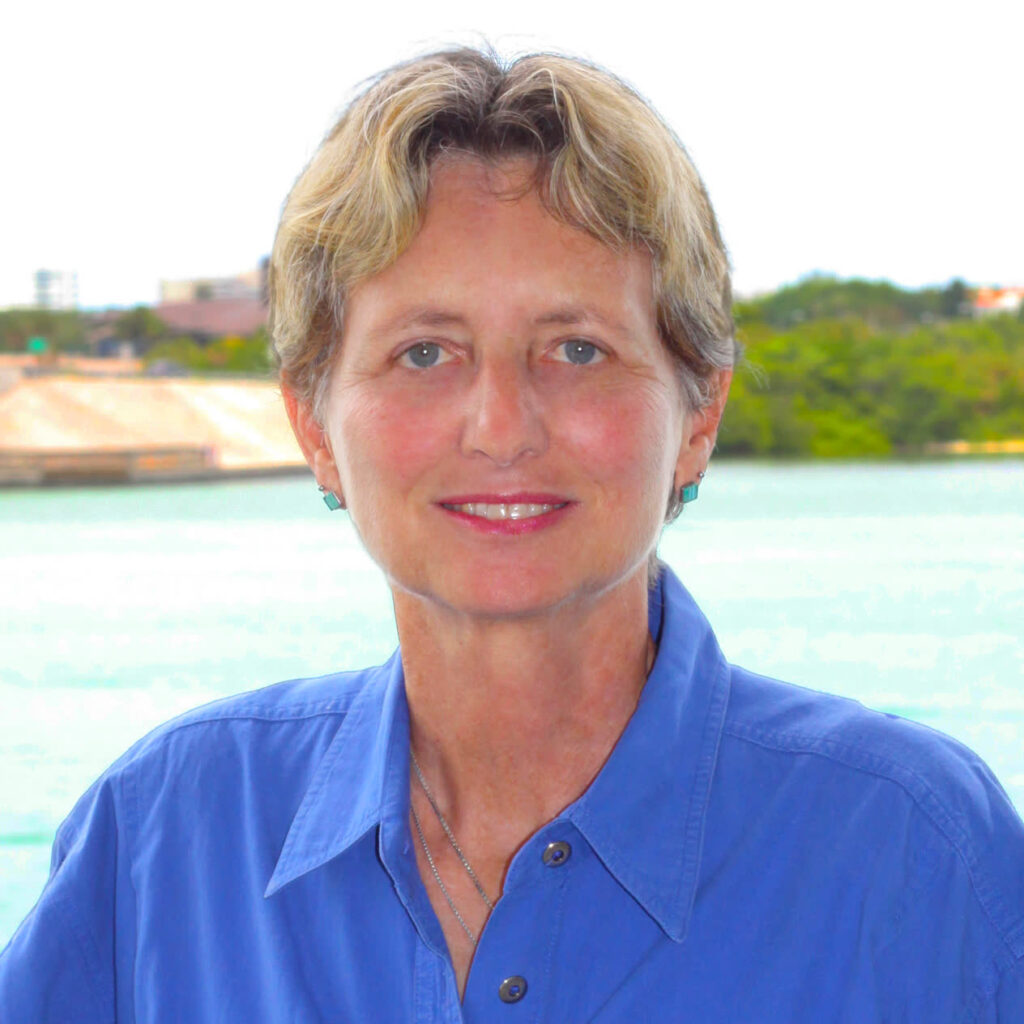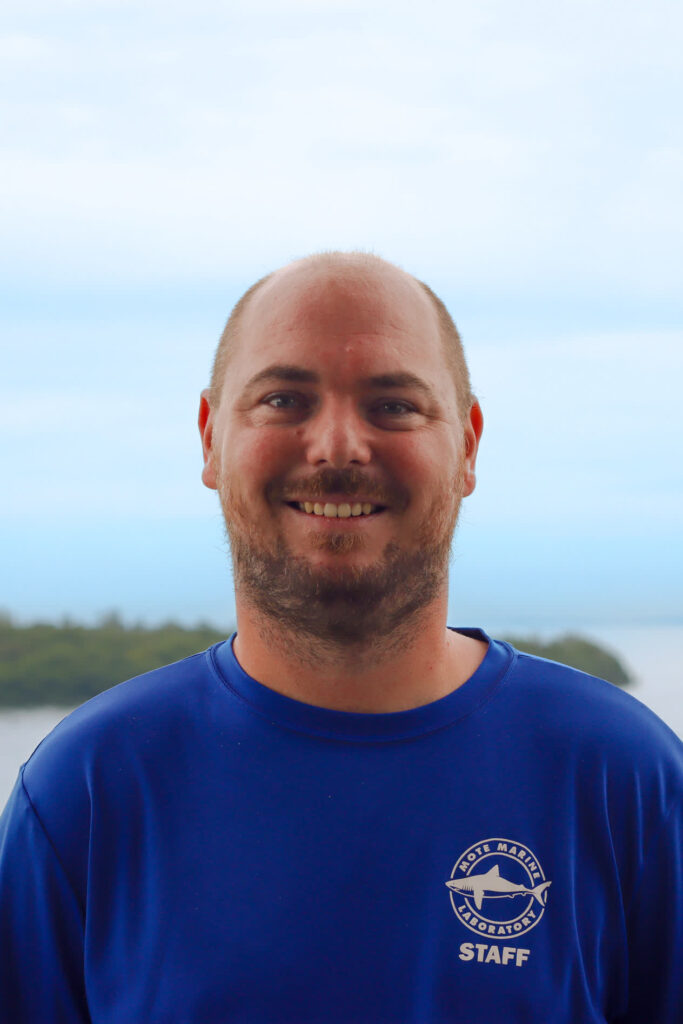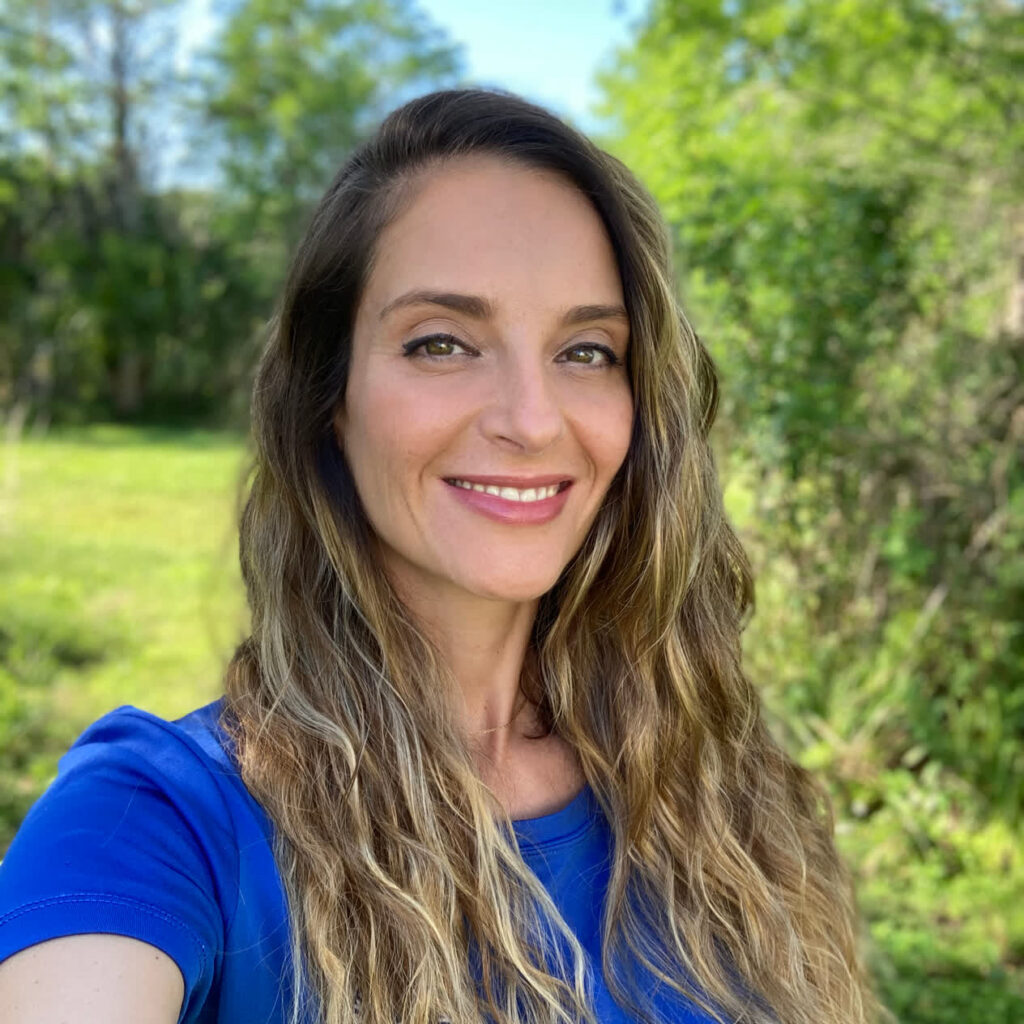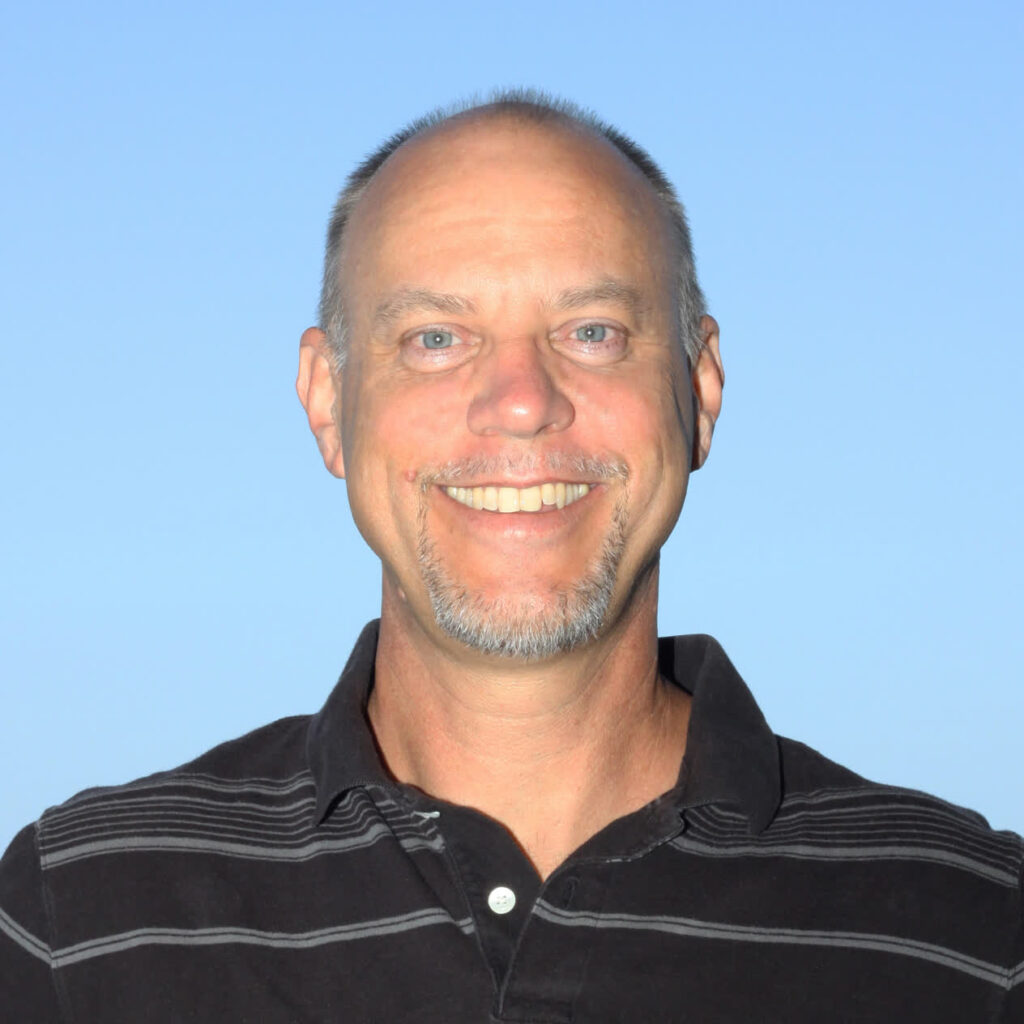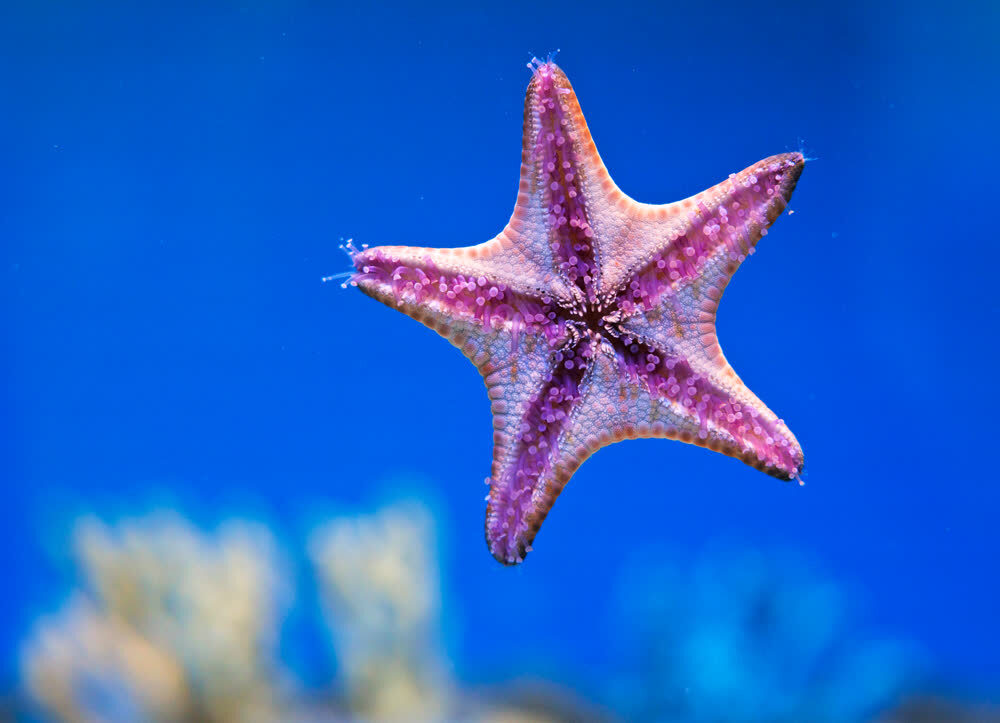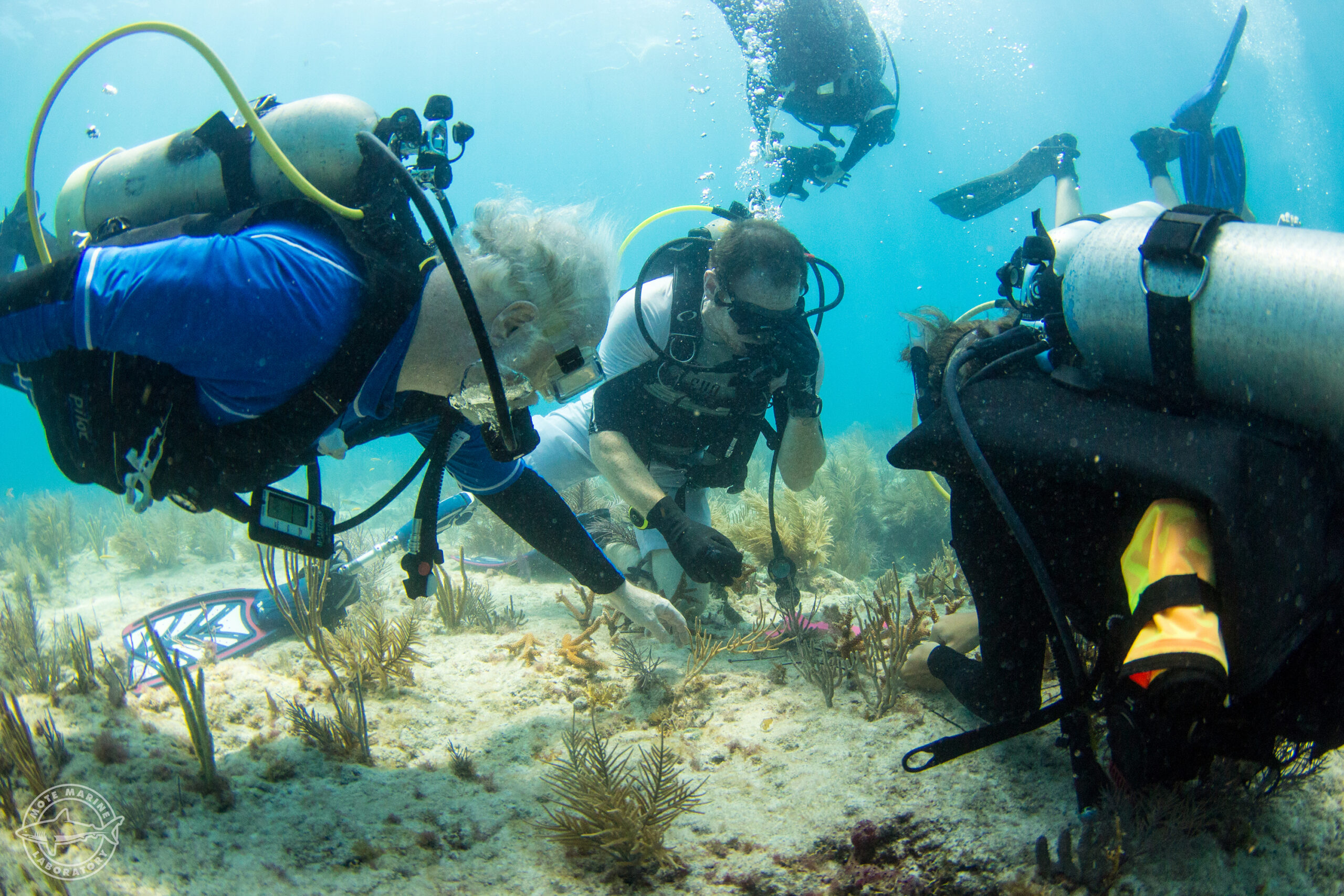Our Work
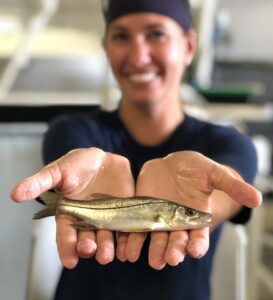
The Fisheries Ecology & Enhancement Program advances science to support abundant, productive fish populations.
We develop innovative tools and methods to help natural resource managers and others replenish and monitor fisheries. Our responsible stock enhancement approaches focus on improving fish survival and promoting important connections between fish and their ecosystems, and they are designed to benefit fish populations, habitats, fishers and the economies that depend on fisheries. Our projects involve both traditional and technological monitoring of fish and fisheries, from seine sampling in the tidal creeks to electronic monitoring of coastal fisheries.
Why Fisheries Enhancement Matters
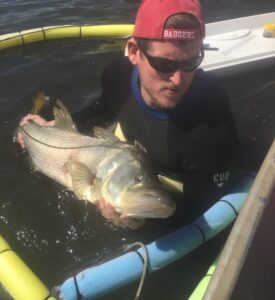
Saltwater recreational fishing contributes $8 billion annually to Florida’s economy, and in general, productive coastal waters help communities thrive by providing economic stability and recreational value. However, fisheries in Florida and beyond face significant challenges, including degraded habitat, reduced water quality, overfishing of some species, harmful algal blooms and more.
Fisheries enhancement (via stocking) involves raising juvenile fish in hatcheries and releasing them into the environment strategically, to improve fishery yields and/or benefit species conservation. To be effective, stock enhancement must be done responsibly and be driven by the best available science.
The Best Available Science
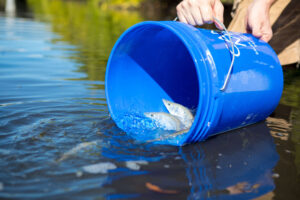
Mote scientists are working to resolve critical uncertainties about marine (saltwater) stock enhancement and help foster development of responsible and effective approaches to:
- Improve survival of hatchery-reared and wild fish to augment fishery yields and restore depleted marine fish populations
- Apply non-invasive monitoring techniques that can help with threatened and endangered species conservation.
- Advance basic knowledge about wild fish stocks and their ecology.
- Aid in restoration of natural ecosystems and improvement of artificial habitats to support existing fisheries or establish new ones.
- Respond rapidly to mitigate the impacts of ecological emergencies such as harmful algal blooms and cold stuns that cause major fish kills.
- Our research combines established principles of fisheries ecology with novel investigative methods, particularly focusing on a model sportfish species—common snook—in southwest Florida ecosystems. Our discoveries offer insights not only for enhancing this vital fishery, but for multiple other fisheries along with populations targeted for conservation.
- To improve the outcomes of fisheries enhancement, we investigate the impacts of factors such as release habitat, timing of releases, magnitude of releases, fish size, acclimation measures, and conditioning of the fish before release on the impact of stocking activities. Applying what we learn from this enables “stocking strategically.”
 We release hatchery-reared juvenile snook following a unique method that allows us to conduct timely assessments of their post-release survival, and in turn, develop statistical models of the potential influences on their survival. Each released snook is tagged with a passive integrated transponder (PIT tag) that is detected by antenna arrays on shore. These antenna arrays allow for fine-scale, timely detection of fish presence and movements after release.
We release hatchery-reared juvenile snook following a unique method that allows us to conduct timely assessments of their post-release survival, and in turn, develop statistical models of the potential influences on their survival. Each released snook is tagged with a passive integrated transponder (PIT tag) that is detected by antenna arrays on shore. These antenna arrays allow for fine-scale, timely detection of fish presence and movements after release.- By treating released snook as ecological probes, we work to identify ecosystem features that are important to protect or restore based on their ability to support healthy fish and fisheries. In particular, we focus on tidal creek systems in Sarasota County, Florida—some of these creeks have the capacity to support functional fish communities while others are losing this capacity because of human-driven modification. By releasing ecological probes into altered systems, we aim to identify areas that may benefit from naturalization.
- While snook use tidal creeks as “nurseries” (juvenile habitat) and overwintering sites, adult snook leave the creeks, move into coastal waters and spawn (breed) at specific bay passes and beaches. Mote scientists are monitoring these movements between shelter and feeding sites by fitting snook with acoustic tags that are detected by underwater receivers strategically placed in the environment. These efforts are part of the Sarasota Coast Acoustic Network (SCAN), a multi-institution team of scientists who use acoustic tags and receivers to monitor species ranging from snook to spotted eagle rays to sharks.
Critical Partnerships
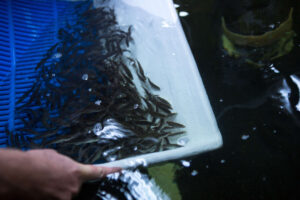
Many fisheries around the world—including sportfish and seafood species—are struggling to keep pace with the pressures of our growing human population. We strive to assist developing fisheries enhancement programs around the world by engaging together in research to develop specific guidelines for strategic stocking and effectively respond to these critical challenges. Mote’s Fisheries Ecology & Enhancement Program works closely with national and international partners and with Mote’s Marine & Freshwater Aquaculture Research Program, which advances sustainable methods for farming animals and plants in water—known as aquaculture. Our partnerships allow the Fisheries Ecology & Enhancement program to investigate new species for stock enhancement research, especially species that have never been mass produced before in hatcheries, and to pursue new avenues to promote responsible stock enhancement research and development.
Another key local partner in our fisheries ecology and enhancement research is the Florida Fish and Wildlife Conservation Commission’s Fish and Wildlife Research Institute (FWRI), which manages a Stock Enhancement Research Facility (SERF). This unique partnership has enabled a team effort in developing, testing and evaluating the effectiveness of stock enhancement as a fishery management tool in Florida. The researchers and fishery managers working together in this partnership are providing the scientific information needed to enable a responsible, adaptive-management approach in conducting and refining stock enhancement in Florida.
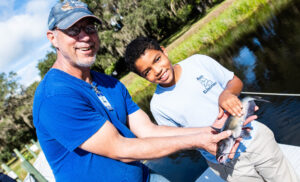
We share fisheries science and sustainable fishing practices with our communities by working with local fishing groups, hosting kids’ fishing clinics in partnership with Mote’s Education team, and partnering with stakeholder groups, such as the Sarasota Bay Fisheries Forum, to connect community members with fisheries management and research.
- Florida Fish and Wildlife Conservation Commission Marine Stock Enhancement Program—Luis Barbieri; Bill Halstead; Chris Young; Michael Tringali; Robert McMichael, Joseph O’Hop, Brent Winner, Richard Cody, Heather Wolfe, Anne Forstchen.
- Florida Fish and Wildlife Conservation Commission Florida Keys Laboratory—John Hunt, William Sharp.
- Science Consortium for Ocean Replenishment—H. Lee Blankenship, Conrad Mahnken, Walt Dickoff, Bari Berijikian, Jon Lee, Hunt Howell, Elizabeth Fairchild, William Hawkins, Jeff Lotz, Reg Blaylock, Eric Saillent, Don Kent, Mark Drawbridge, Kristen Gruenthal.
- Gulf of Mexico Marine Hatchery and Restoration Consortium
Electronic Monitoring
Center for Fisheries Electronic Monitoring at Mote (CFEMM) develops and assesses electronic monitoring (EM) technology as a tool in the Gulf of Mexico commercial reef fish fishery to better meet the demand by industry and management for accurate, independent data to ensure long-term fishery health.
Center for Fisheries Electronic Monitoring
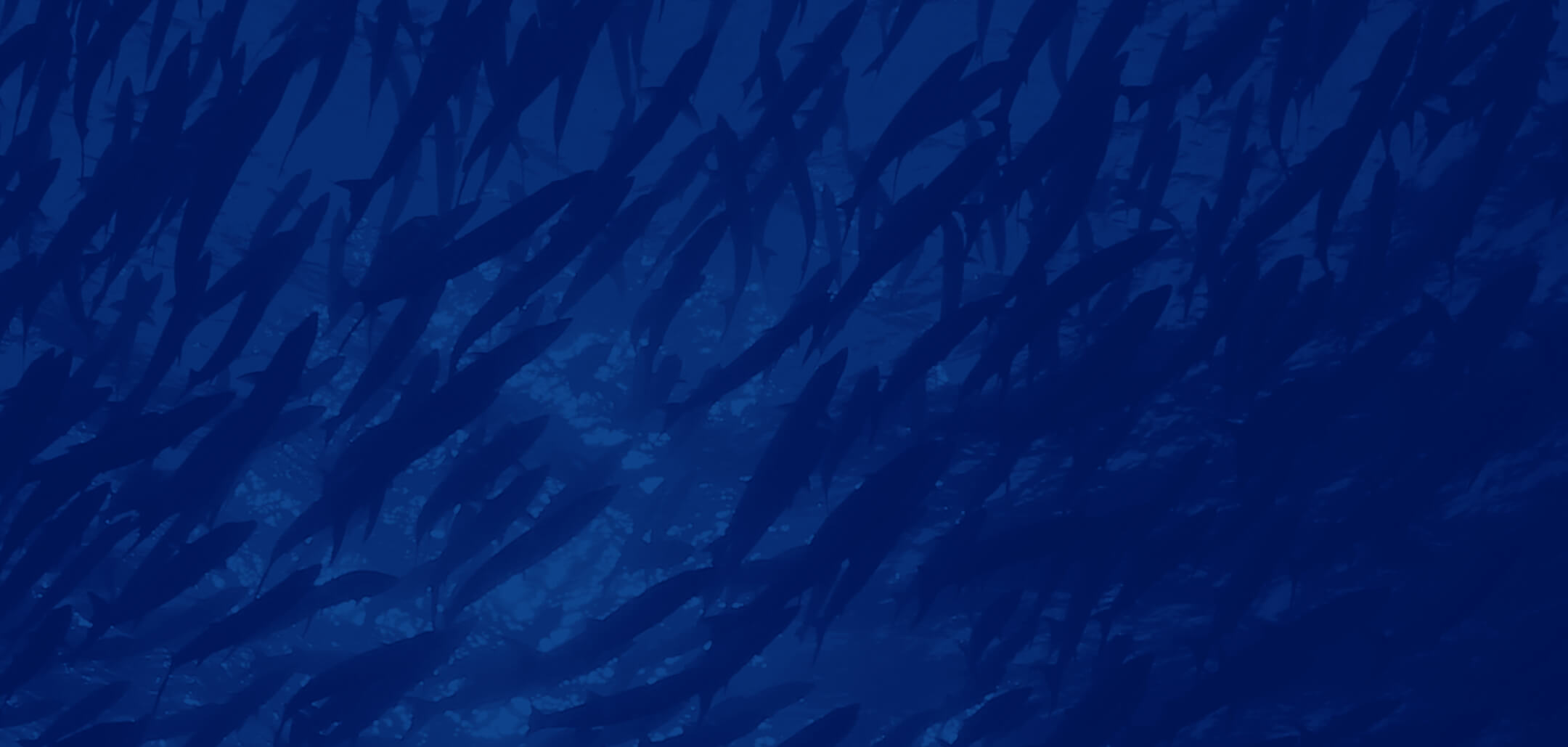
Fisheries Ecology & Enhancement Program Team
Additional Program Information
- Jesse T. Trushenski, H. Lee Blankenship, James D. Bowker, Thomas A. Flagg, Jay A. Hesse, Kenneth M. Leber, Don D. MacKinlay, Desmond J. Maynard, Christine M. Moffitt, Vincent A. Mudrak, Kim T. Scribner, Scott F. Stuewe, John A. Sweka, Gary E. Whelan & Connie Young-Dubovsky. 2015. Introduction to a Special Section: Hatcheries and Management of Aquatic Resources (HaMAR)—Considerations for Use of Hatcheries and Hatchery-Origin Fish, North American Journal of Aquaculture, 77(3):327-342.
- Trushenski, J., L. Blankenship, J. Bowker, T. Flagg, J. Hesse, K. Leber, K. Lorenzen, and 9 additional co-authors. 2014. AFS completes assessment, issues new guidance regarding hatchery operation and the use of hatchey-origin fish. Fisheries 39(11): 543-547.
- Blankenship, H.L. and K.M. Leber. 2014. A responsible approach to marine stock enhancement. Pp 659-668. Reprinted In: Sass, G.G. and M.S. Allen (Eds) Foundations of Fisheries Science. American Fisheries Society, Bethesda, Maryland.
- Lorenzen, Kai, Ann-Lisbeth Agnalt, H. Lee Blankenship, Anson Hines, Kenneth M. Leber, Neil R. Loneragan, and Matthew D. Taylor (Editors). 2013. Fourth International Symposium on Stock Enhancement and Sea Ranching. Reviews in Fisheries Science, 21(3-4).
- Lorenzen, Kai, Ann-Lisbeth Agnalt, H. Lee Blankenship, Anson Hines, Kenneth M. Leber, Neil R. Loneragan, and Matthew D. Taylor. 2013. Evolving context and maturing science: aquaculture-based enhancement and restoration enter the coastal fisheries management toolbox. Reviews in Fisheries Science, 21(3-4):213-221
- Taylor, M.D., N.P. Brennan, K. Lorenzen and K.M. Leber. 2013. Generalized Predatory Impact Model: A numerical approach for assessing trophic limits to hatchery releases and controlling related ecological risks. Reviews in Fisheries Science, 21(3-4):341-353.
- Camp, E.V., K. Lorenzen, R.N.M. Ahrens, L. Barbieri and K.M. Leber. 2013. Potentials and limitations of stock enhancement in marine recreational fisheries systems: An integrative review of Florida’s red drum enhancement. Reviews in Fisheries Science, 21(3-4):388-402.
- Leber, K.M. 2013. Marine Fisheries Enhancement: Coming of Age in the New Millennium. p 1139-1157 In: Paul Christou et al. (eds.), Sustainable Food Production. DOI 10.1007/978-1-4614-5797-8, Springer Science+Business Media New York. Originally published in Robert A. Meyers (ed.). 2012. Encyclopedia of Sustainability Science and Technology, DOI 10.1007/978-1-4419-0851-3
- Leber, K.M. and H.L. Blankenship 2012. How advances in tagging technology improved progress in a new science: marine stock enhancement. Introductory chapter Pages 1-12 In: American Fisheries Society Symposium 76: 2nd International Symposium on Advances in Fish Marking and Tagging Technology.
- Lorenzen, K., K.M. Leber and H.L. Blankenship. 2010. Responsible approach to marine stock enhancement: an update. Reviews in Fisheries Science 18(2):189-210.
- Lorenzen, K., R.S. Steneck, R.R. Warner, A.M. Parma, F.C. Coleman, and K.M. Leber. 2010. The spatial dimensions of fisheries: putting it all in place. Bulletin of Marine Science. 86:169-178.
- Bell, J.D., K.M. Leber, H.L. Blankenship, N.R. Loneragan, and Masuda and G. Vanderhaegen (Editors). 2008. A New Era for Restocking, Stock Enhancement and Sea Ranching of Coastal Fisheries Resources. Special Issue, Reviews in Fisheries Science 16(1-3). 402 pp.
- Bell, J.D., K.M. Leber, H.L. Blankenship, N.R. Loneragan, and R. Masuda. 2008. A new era for restocking, stock enhancement and sea ranching of coastal fisheries. Reviews in Fisheries Science 16(1,2): 1-9.
- Brennan, N.P., C.W. Walters, and K.M. Leber.2008.Manipulations of stocking magnitude:addressing density dependence in juvenile cohorts of common snook Centropomus undecimalis. Reviews in Fisheries Science 16(1,2): 215-227.
- Tringali, M.D., K.M. Leber, W.G. Halstead, R. McMichael, J. O’Hop, B. Winner, R. Cody, C. Young, C. Neidig, H. Wolfe, A. Forstchen, and L. Barbieri. 2008. Marine Stock Enhancement in Florida: A Multi-disciplinary, Stakeholder-supported, Accountability-based Approach. Reviews in Fisheries Science. 16(1,2):51-57.
- Brennan, N.P., K.M. Leber, and B.R. Blackburn. 2007. Use of coded-wire and visible implant elastomer tags for marine stock enhancement with juvenile red snapper. Fisheries Research. 83:90-97.
- Pine, W. E., III, and K. M. Leber. 2006. Working with Non-Governmental Organizations. Chapter 10, in American Fisheries Society Guide to Fisheries Employment. AFS. peer-reviewed book.
- Brennan, N. P., M. C. Darcy and K. M. Leber. 2006. Predator-free enclosures improve post-release survival of stocked common snook. Journal of Experimental Marine Biology and Ecology. 335(2): 302-311.
- Leber, K. M., R. N. Cantrell and P.S. Leung. 2005. Optimizing cost effectiveness of size at release in stock enhancement programs. North American Journal of Fisheries Management 25:1596-1608.
- Brennan, N. P., K. M. Leber, H. L. Blankenship, J. M. Ransier, R. DeBruler, Jr.. 2005. An evaluation of coded wire and elastomer tag performance in juvenile common snook under field and laboratory conditions. North American Journal of Fisheries Management 25:437-445.
- Bartley, D.M. and K.M. Leber, Editors. 2004. Case Studies of the Effectiveness of Stocking Aqucultured Fishes and Invertebrates to Replenish and Enhance Coastal Fisheries. Fishery Technical Paper No. 429. Food and Agriculture Organization of the United Nations (FAO), Rome, Italy. 213 pp.
- Leber, K. M. 2004. Marine Stock Enhancement in the USA: Status, trends and needs. Pp 11-24 In Leber, K.M., S. Kitada, T. Svåsand and H.L. Blankenship (eds) Stock Enhancement and Sea Ranching: Developments, Pitfalls and Opportunities. 2nd Edition. Blackwell Scientific Publications, Oxford. 562 pp.
- Leber, K. M., S. Kitada, T. Svåsand and H.L. Blankenship. 2004. Stock Enhancement and Sea Ranching: Developments, Pitfalls and Opportunities. 2nd Edition. Blackwell Publishing, Oxford. 562 pp. Preview at Blackwell’s web site for the book
- Cantillo A. Y., E. Collins, K. M. Leber and S. Stover, Eds. 2004. Charles M. Breder, Jr.: Atlantis, 1934. NOAA/Mote Marine Laboratory/Woods Hole Oceanographic Institution Joint Publication. NOAA Technical Memorandum NOS NCCOS CCMA 169. 49 pp. Read Now
- Leber, K. M. 2002. Advances in marine stock enhancement: shifting emphasis to theory and accountability. Pp 79-90 In Stickney, R. R. and J. P. McVey (eds) Responsible Marine Aquaculture CABI Publishing, New York.
- Blaylock, R. B., Leber, K. M., Lotz, J. M., and D. A. Ziemann. 2000. The U.S. Gulf of Mexico Marine Stock Enhancement Program (USGMSEP): The use of aquaculture technology in “responsible” stock enhancement. Bulletin of the Aquaculture Association of Canada 100(3):16-22.
- Tringali, M.D. and K. M. Leber. 1999. Genetic considerations during the experimental and expanded phases of snook stock enhancement. Bull. National Research Institute Aquaculture (Japan) Suppl. 1:109-119.
- Leber, K. M. 1999. Rationale for an Experimental Approach to Stock Enhancement. Pages 63-75 in Stock Enhancement and Sea Ranching (Ed. by B.R. Howell, E. Moksness, and T. Svåsand) Blackwell Scientific Publications, Oxford. 606 pages.
- Pruder, G. D., D. A. Ziemann, Kenneth M. Leber, Jeffrey M. Lotz, William E. Hawkins, and Lytha D. Conquest. 1999. U.S. Gulf of Mexico marine stock enhancement five-year program: 1999 – 2004: Program management for planning, execution, review, and evaluation. Bull. National Research Institute Aquaculture (Japan) Suppl. 1:89-99.
- Leber, K. M., N. P. Brennan and S. M. Arce. 1998. Recruitment patterns of juvenile, cultured Pacific threadfin, Polydactylus sexfilis (Polynemidae), released along sandy marine shores in Hawaii. Bulletin of Marine Science 62(2):389-408.
- Leber, K. M., H. L. Blankenship, S. M. Arce, and N. P. Brennan. 1997. Influence of release season on size-dependent survival of cultured striped mullet, Mugil cephalus, in a Hawaiian estuary. Fishery Bulletin, 95(2):267-279.
- Leber, K. M. and C-S. Lee. 1997. Marine stock-enhancement potential with striped mullet, Mugil cephalus, in Hawaii. Bulletin of Natural Research Institute for Aquaculture, Suppl.3:117-134.
- Leber, K. M. and S. M. Arce. 1996. Stock enhancement effect in a commercial mullet Mugil cephalus fishery in Hawaii. Fisheries Management and Ecology 3:261-278.
- Leber, K. M., S. M. Arce, D. A. Sterritt, and N. P. Brennan. 1996. Marine stock-enhancement potential in nursery habitats of striped mullet, Mugil cephalus, in Hawaii. Fishery Bulletin 94(3):452-471.
- Blankenship, H. L. and K. M. Leber. 1995. A responsible approach to marine stock enhancement. In Uses and effects of cultured fishes in aquatic ecosystems. American Fisheries Society Symposium 15:165-175.
- Leber, K. M., N. P. Brennan, and S. M. Arce. 1995. Marine enhancement with striped mullet: are hatchery releases replenishing or displacing wild stocks? In Uses and effects of cultured fishes in aquatic ecosystems. American Fisheries Society Symposium 15:376-387.
- Leber, K. M. 1995. Significance of fish size-at-release on enhancement of striped mullet fisheries in Hawaii. Journal World Aquaculture Society 26(2):143-153.
- Moss, S. M., G. D. Pruder, K. M. Leber and J. A. Wyban. 1992. Shrimp microcosm results: the relative enhancement of Penaeus vannamei growth by selected fractions of shrimp pond water. Aquaculture 101: 229-239
- Freeman, D. W., E. O. Duerr, and K. M. Leber. 1992. Use of bagasse as a feed input to semi-intensive shrimp growout ponds. Journal World Aquaculture Society 23: 23-30.
- Wyban, J. A., G. D. Pruder, K. M. Leber and L. Burzell. 1989. Paddlewheel effects on shrimp growth, production and crop value in commercial earthen ponds. Journal World Aquaculture Society 20(1): 18-23.
- Leber, K. M. and G. D. Pruder. 1988. Using experimental microcosms in shrimp research: the growth-enhancing effect of shrimp pond water. Journal World Aquaculture Society 19(4): 197-203.
- Leber, K. M. and H. S. Greening. 1986. Community studies in seagrass meadows: a comparison of two methods for sampling microinvertebrates and fishes. Fishery Bulletin 84(2): 443-450.
- Leber, K. M. 1985. Influence of decapod foraging and microhabitat complexity on seagrass communities: a field test of the refuge hypothesis. Ecology 66(6): 1951-1964.
- Leber, K. M. 1982. Seasonality of macroinvertebrates on a temperate, high wave energy sandy beach. Bulletin of Marine Science 32: 86-98.
- Leber, K. M. 1982. Bivalves (Tellinacea: Donacidea) on a North Carolina Beach: Contrasting population size structures and tidal migrations. Marine Ecology Progress Series 7: 297-301.
- Leber, K. M. 1981. Spatial patterns of Ocypode quadrata: A re-evaluation. (Decapods, Brachyura). Crustaceana 41: 110-112.
- T. R. Tiersch, W. R. Wayman, D. P. Skapura, C. L. Neidig & H. J. Grier. 2004. Transport and cryopreservation of sperm of the common snook, Centropomus undecimalis [Bloch]. Aquaculture Research. 2004:278-288.
- Neidig, C. L., D. S. Skapura, and H. J. Grier. 2001. Induction of ovulation in common snook, Centropomus undecimalis [Bloch], using human chorionic gonadotropin (HCG) and gonadotropin-releaseing hormones (GnRH). Proceedings of the 52nd Gulf and Caribbean Fisheries Institute. 52:360-362.
- Neidig, C. L., D. P. Skapura, H. J. Grier and C. W. Dennis. 2000. Techniques for spawning common snook: broodstock handling, oocyte staging, and egg quality. North American Journal of Aquaculture 62:103-113.
- Darcy, M.C. and D.B. Eggleston (2005). Do habitat corridors influence animal dispersal and colonization in estuarine systems? Landscape Ecology 20(7):841-855.
- Koulish, S., C.R. Kramer, and H. J. Grier. 2002. Organization of the male gonad in a protogynous fish, Thalassoma bifasciatum (Telostei: Labridae). Journal of Morphology, 254:292-311.
- Taylor, R. G., J. A. Whittington, W. E. Pine III and K. H. Pollock. 2006. Effect of different reward levels on tag reporting rates and behavior of common snook anglers in Southeast Florida. North American Journal of Fisheries Management. 26:645-651.
- Coggins, L. G., W. E. Pine, III, C. J. Walters, D. R. Van Haverbeke, D. Ward, and L. Johnstone. In Press. Abundance trends and status of the Little Colorado River population of Humpback Chub, Gila cypha. North American Journal of Fisheries Management.
- Coggins, L. G., W. E. Pine, III, C. J. Walters, and S. J. D. Martell. In Press. Age structured mark recapture analysis (ASMR): a vpa based model for Analyzing Age Structured Capture-Recapture Data. North American Journal of Fisheries Management.
- Walters, D. S., T. J. Kwak, and W. E. Pine, III. In Press. Age, growth, and mortality of introduced flathead catfish in Atlantic rivers and a review of other populations. North American Journal of Fisheries Management.
- Pine, W. E., III, T. J. Kwak, D. S. Water, and J. A. Rice. 2005. Diet Selectivity of introduced flathead catfish in coastal rivers. Transactions of the American Fisheries Society. 134:901-909.
- Pine, W. E., III, K. H. Pollock, J. E. Hightower, T. J. Kwak, J. A. Rice. 2003. A review of tagging methods for estimating fish population size and components of mortality. Fisheries 28:10-23. PDF Reprint.

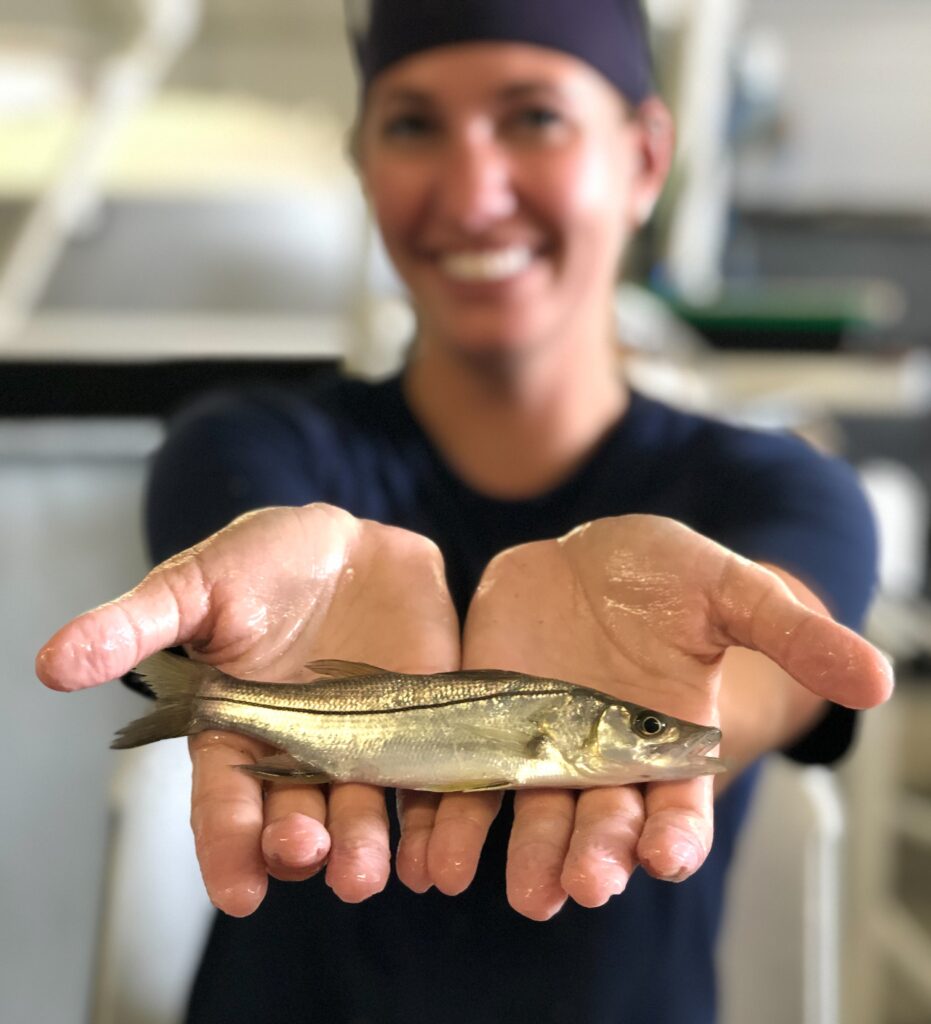
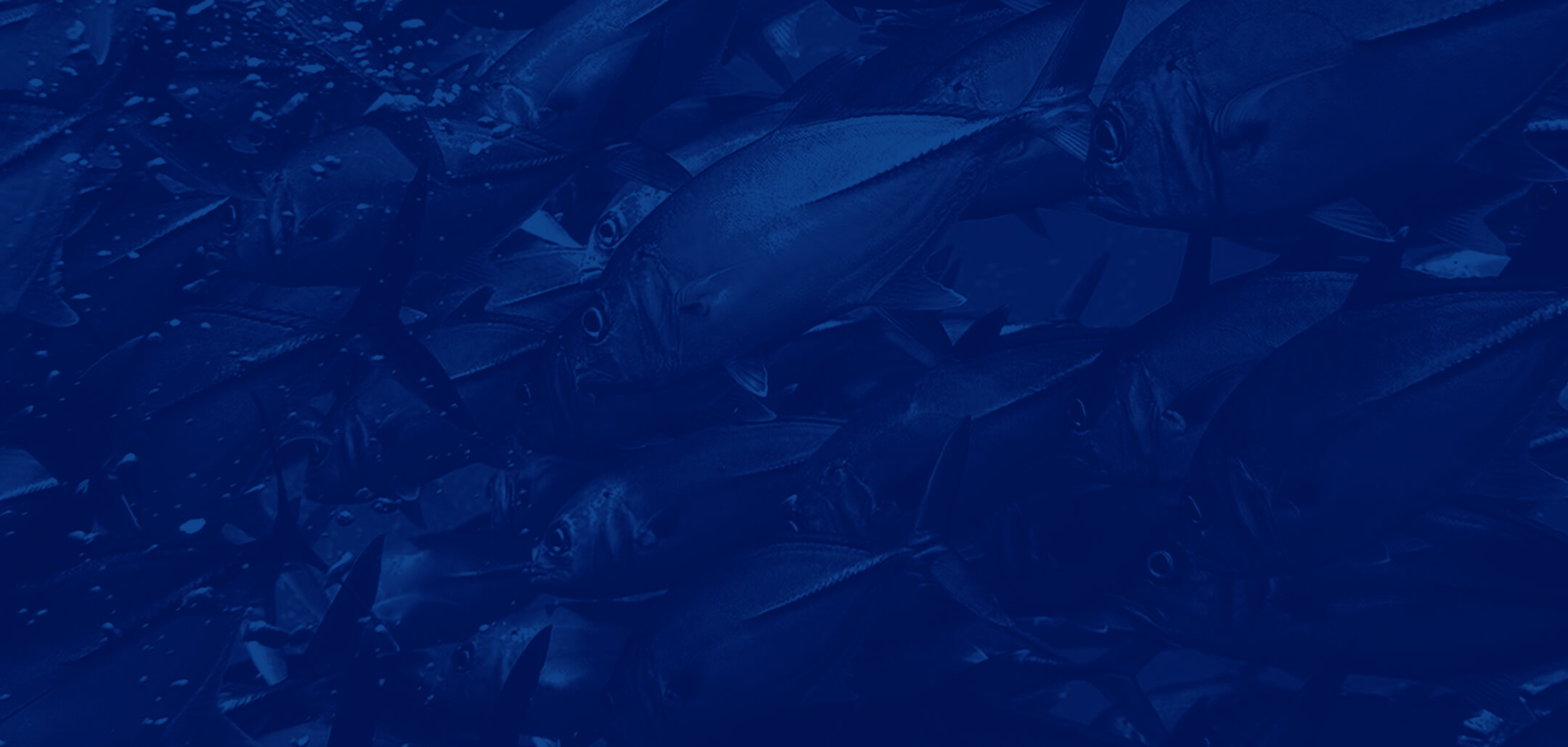
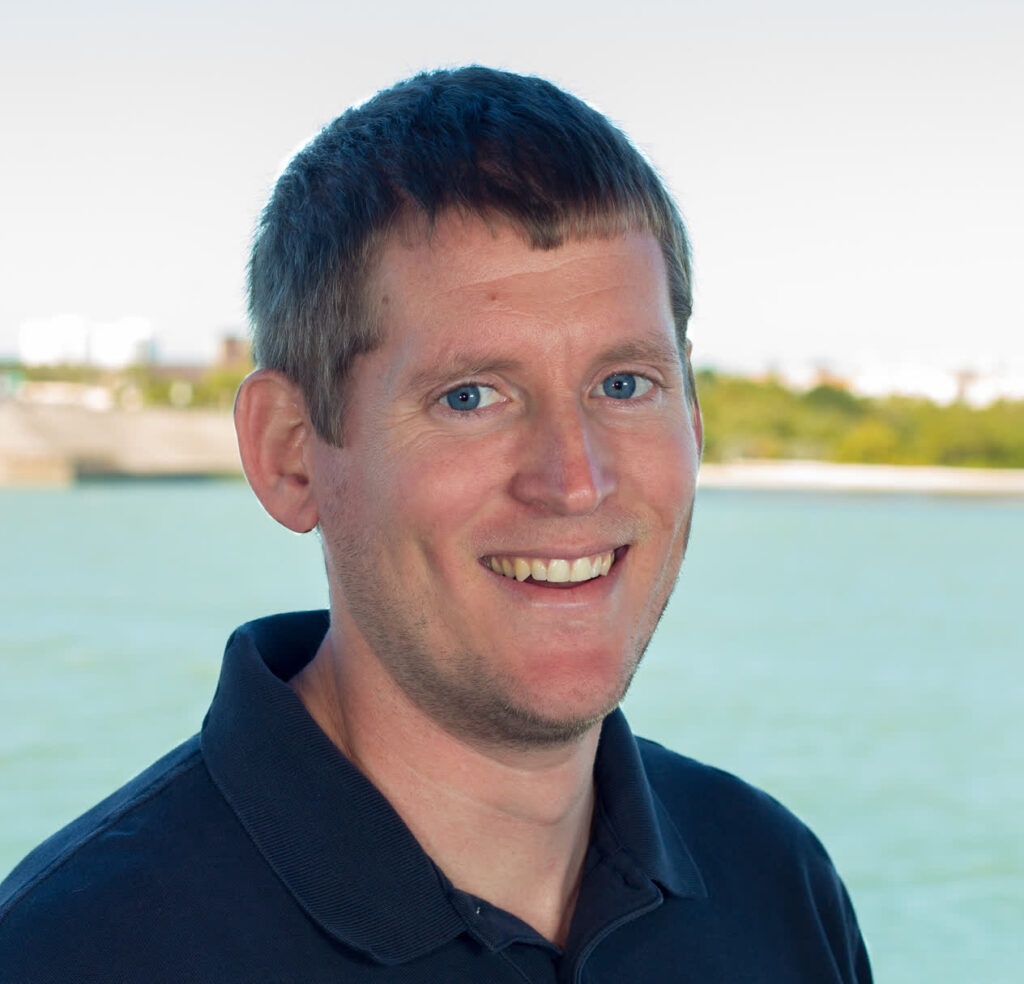
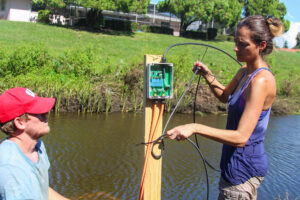 We release hatchery-reared juvenile snook following a unique method that allows us to conduct timely assessments of their post-release survival, and in turn, develop statistical models of the potential influences on their survival. Each released snook is tagged with a passive integrated transponder (PIT tag) that is detected by antenna arrays on shore. These antenna arrays allow for fine-scale, timely detection of fish presence and movements after release.
We release hatchery-reared juvenile snook following a unique method that allows us to conduct timely assessments of their post-release survival, and in turn, develop statistical models of the potential influences on their survival. Each released snook is tagged with a passive integrated transponder (PIT tag) that is detected by antenna arrays on shore. These antenna arrays allow for fine-scale, timely detection of fish presence and movements after release.